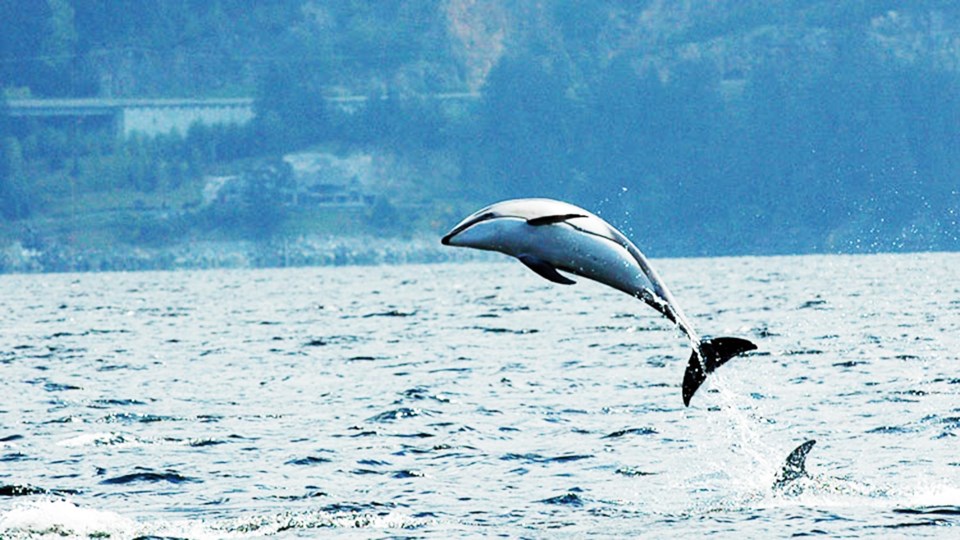With smelt growingg on the pilings around Squamish, we may see more cetacean activity around Bowen Island as they hatch and become a food source for a wide range of predators from fish to porpoises.
With very little known about temporal distribution of whales, dolphins and porpoises, the Research Coordinator of BC Cetacean Sightings is asking for help to track the marine mammals. Tessa Danelsko says “every sighting counts,” when it comes to an increased understanding of the marine mammals in the area. Danelsko says that in the last couple months one or two humpback whales have been seen around the island, but she adds that there could be more humpbacks that are travelling undetected or unreported. “The more eyes out there, the better,” she says. Last Thursday, passengers heading from Horseshoe Bay in the late afternoon spotted a trio of Harbour Porpoises. The researcher says that the difference between a Harbour Porpoise and a Pacific White Sided Dolphin is that the porpoise has a small triangular dorsal fin, which is grey to black. “They are elusive, travel in groups of one to three and often look like they are spinning.” Danelsko says “there’s been a resurgence of Pacific White Sided Dolphins. They were virtually absent from the area for the last 10 years or so. Now they have been sighted in the area again.”
Danelsko says that the white-sided dolphins, on the other hand, are gregarious, playfully leaping out of the water while travelling in groups that can number in the thousands. In 2012, the dolphins were seen regularly from the fall through to the spring. The general explanation for their appearance was that the area was recovering. The era of heavy industrialization was over and. 100 old pilings around Squamish were being carefully covered by the Squamish Streamkeepers with fabric that acted as a barrier to the toxic coatings in the wood. Smelt eggs are now able to attach to the pilings and thrive. Spawning happens two to three times from late January into early April, with the majority of spawning going on right now.
Danelsko says that warming waters from climate change will have complicated results. “Some of the migratory species have a high tolerance to changing temperatures, especially the species that travel between warmer waters and Alaska. The local effects from human impact, she notes, “will have to be researched very carefully.”
The marine mammal researcher says that grey whales, more typically sighted off the outer coast of Vancouver Island were seen along the Sunshine Coast last summer, close to Bowen.
Sightings reported by citizen scientists are used to assess habitat usage, animal movements, impact of noise, or other human factors.
“Sightings from Network Observers have led to the discovery of previously unidentified hot-spots, such as a population of Pacific white-sided dolphins that began to use the waters around Howe Sound in 2010 or to the discovery that in some years grey whales are utilizing Baynes Sound to feed on herring roe on their annual migration to the Bering Sea.”
To help researchers track whales, dolphins and porpoises you can learn to identify the behaviours and the species for accurate reporting by checking out the Wild Whales
http://wildwhales.org/watching-whales/identifying-species/



